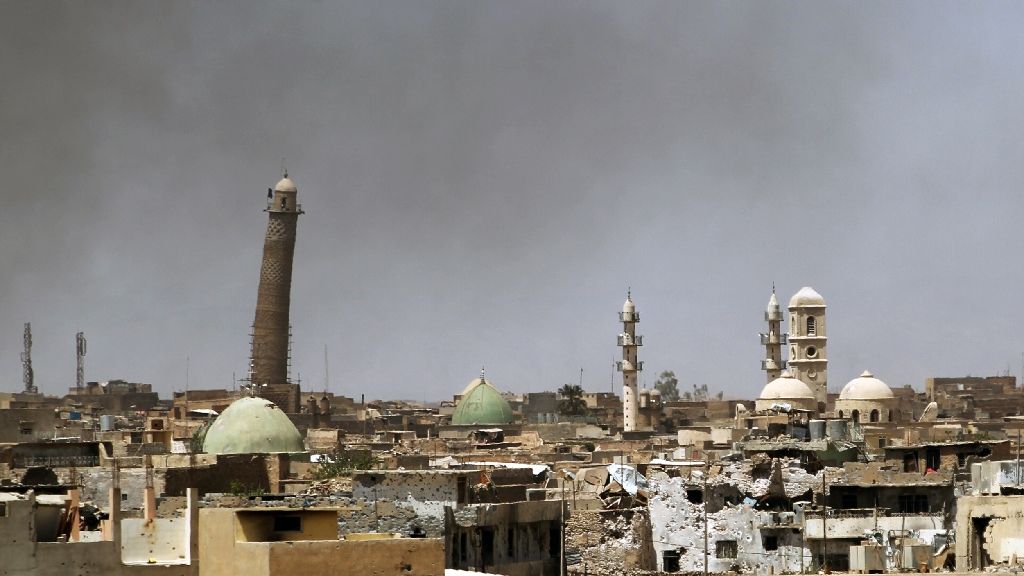Mosul’s iconic leaning tower was missing from its skyline for the first time in centuries Thursday after desperate extremists blew it up as Iraqi forces advanced on an ancient mosque compound in the embattled northern city.
The loss of the iconic 12th century minaret — one of the country’s most recognizable monuments sometimes referred to as Iraq’s Tower of Pisa — left the country in shock.
Explosions on Wednesday evening leveled both the Nuri mosque where Abu Bakr al-Baghdadi gave his first sermon as leader of the terror group ISIS and its ancient leaning minaret, known as the “Hadba” (Hunchback).
Officials from Iraq and the US-led anti-ISIS coalition said the destruction of the site was a sign of the radical group’s imminent loss of Mosul, with Prime Minister Haider al-Abadi calling it an “official declaration of defeat”.
But the destruction had been widely anticipated, with commanders saying ISIS would not have allowed Iraqi forces to score a hugely symbolic victory by recapturing the site.
“They blew up this place in an attempt to cover up their heavy losses in the media, but the media and the people see the victories and see the collapse of ISIS,” Brigadier General Falah Fadel al-Obeidi, from the elite Counter-Terrorism Service, told AFP in Mosul.
ISIS claimed on its Amaq propaganda agency that the site was hit in a US air strike, but the US-led coalition said it was the extremists who had “destroyed one of Mosul and Iraq’s great treasures”.
Brett McGurk, the US envoy to the coalition, said it was the “clearest sign yet of desperation and defeat” from the extremists.
In Iraq, while some mourned the loss of a piece of their cultural identity, others stressed that the destructions were dwarfed by the ongoing human suffering.
The head of the UN’s cultural agency, Irina Bokova, said “this new destruction deepens the wounds of a society already affected by an unprecedented humanitarian tragedy”.
Bokova pledged UNESCO’s “renewed solidarity and readiness to support, restore and rehabilitate cultural heritage whenever possible”.
Osama al-Naqash, director of the Baghdad University Museum, did a painting three years ago showing the Hadba collapsing.
“I imagined that this would happen… and that the obscurity Daesh brought with it would lead to this situation. I am living in great sadness since I heard the news,” he said.
The destruction of the site in Mosul’s Old City adds to a long list of priceless heritage and historical monuments destroyed by ISIS during its three-year rule over parts of Iraq and Syria.
The minaret, which was completed in 1172 and has been listing for centuries, is featured on Iraq’s 10,000-dinar banknote and was the main symbol of Iraq’s second city — giving its name to countless restaurants, companies and even sports clubs in Mosul.
After seizing Iraq’s Sunni Arab heartland in June 2014, IS reportedly rigged the Hadba with explosives but was prevented from blowing it up by the local population. The extremists consider the reverence of objects, including of such sites, as heresy.
The minaret used to be visible from many spots in the city, especially from the east bank, across the Tigris river that divides the city.
Iraqi forces had been approaching the Nuri mosque on Wednesday, after launching an assault on Sunday to retake the Old City, the last district of Mosul still under ISIS control.
About 100,000 residents are believed to still be trapped in the Old City by ISIS, which has been using civilians as human shields to defend its last redoubt in Mosul.
